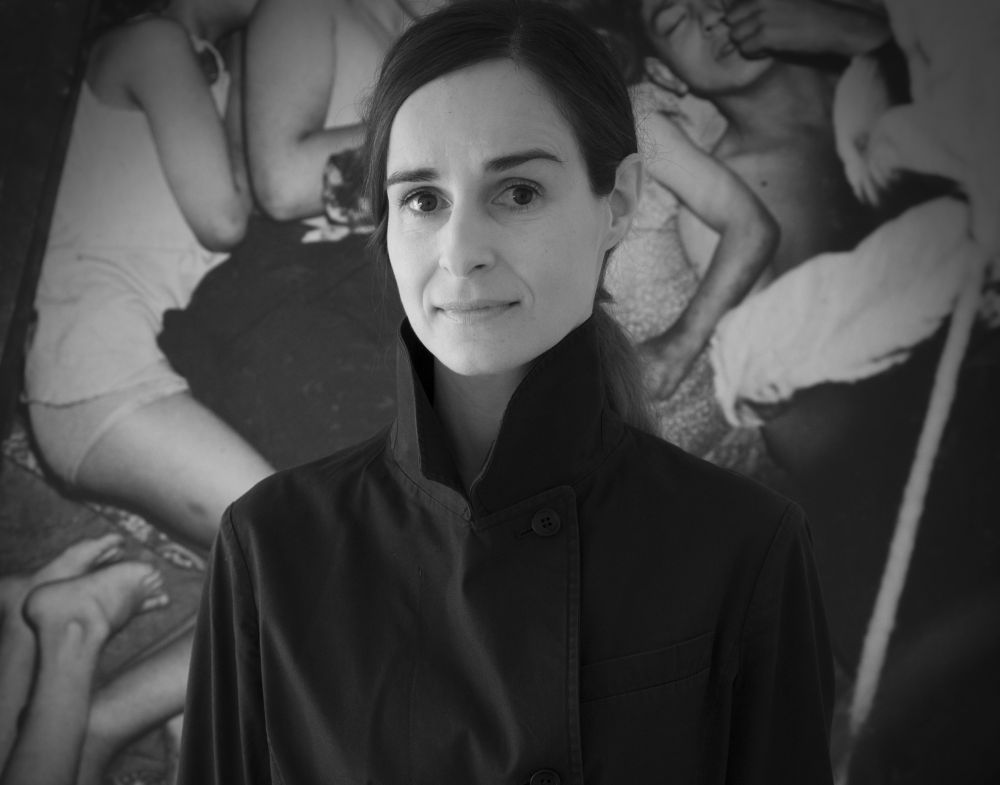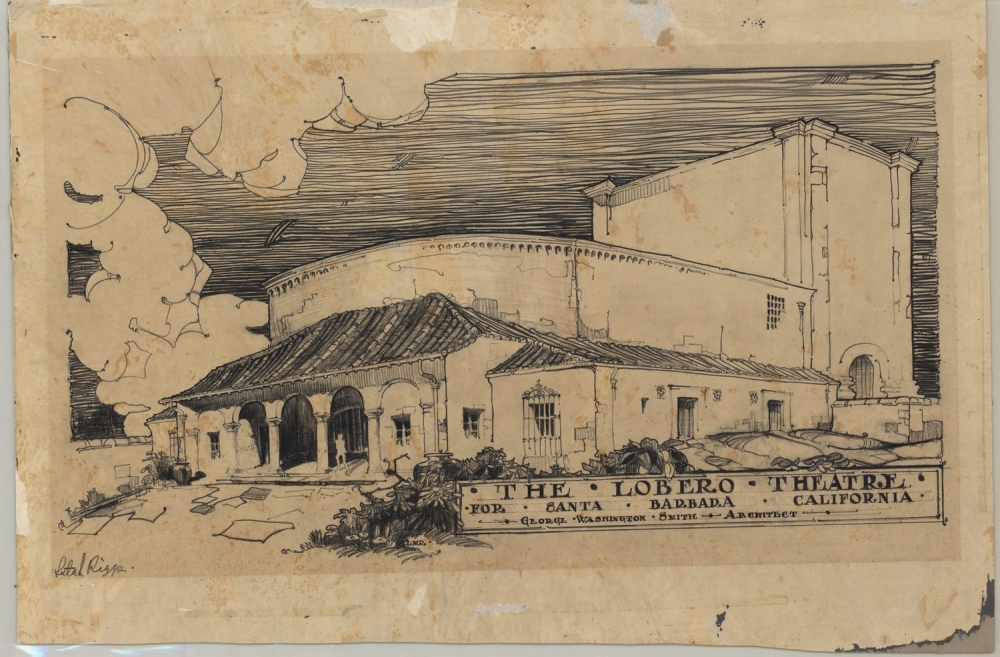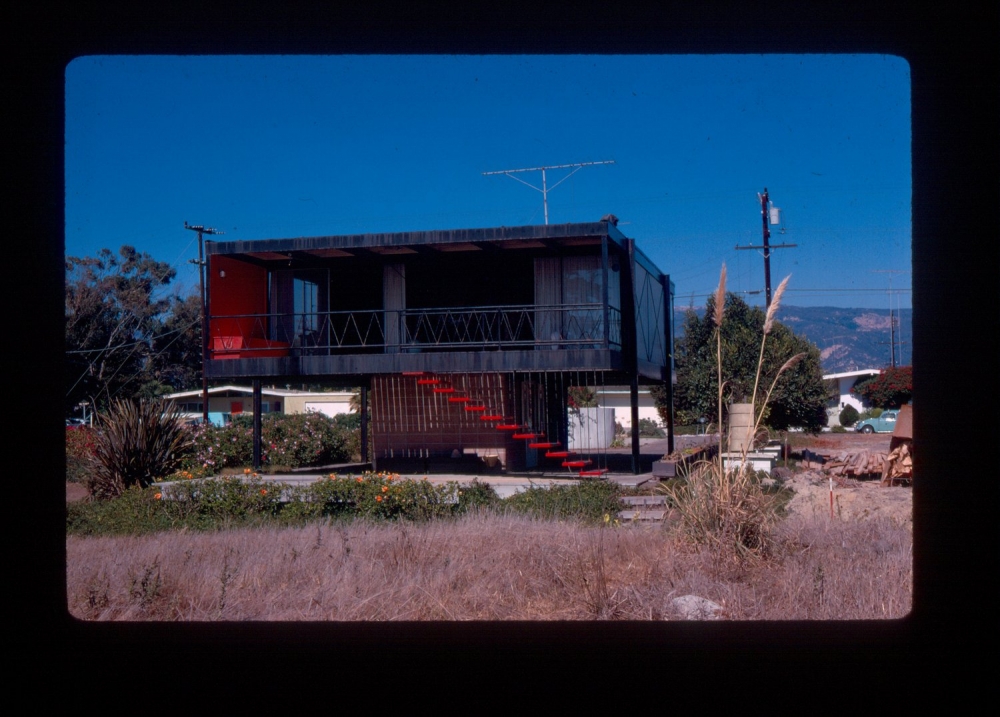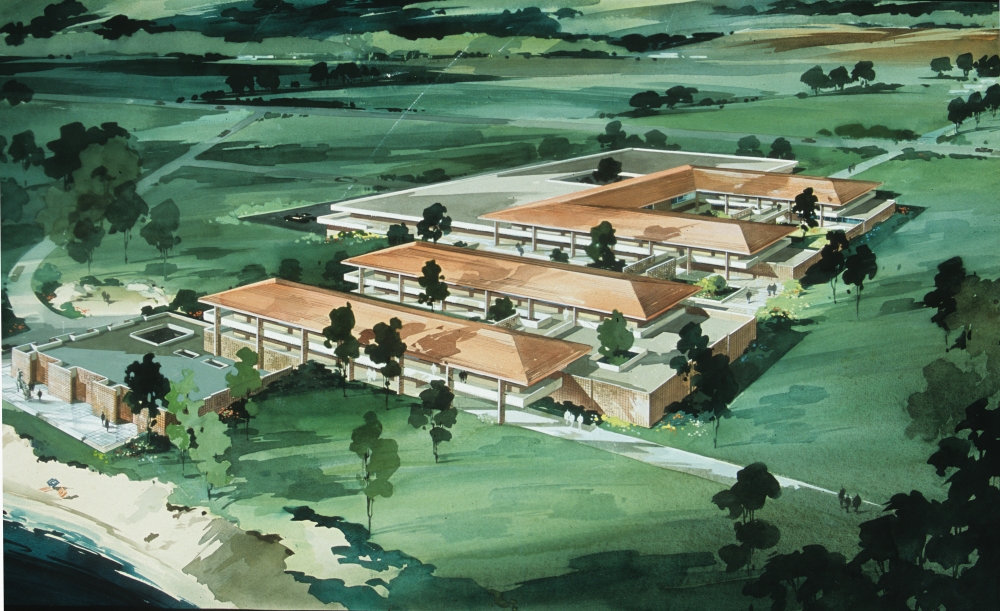Designs on the Future

It would be hard to find someone more prepared for a job than Silvia Perea.
An architect by training — she earned a Ph.D. from the Polytechnic University of Madrid — she has spent the past 11 years as a curator of exhibitions around the world. Before that she was a university professor and edited architectural magazines.
Today she is the new curator of UC Santa Barbara’s Art, Design & Architecture Museum, which holds the largest collection of architectural drawings in North America.
Perea comes to the museum eager to showcase its strengths and to seek new ways to bring its collection to a wide audience. The Current caught up with Perea to ask about the museum and her plans for the future of the collection.
The Current: You have a remarkable, globe-trotting resume. What appealed to you about the museum and UC Santa Barbara?
Silvia Perea: The museum owns a unique collection, that of the history of modern architecture in California, which was tremendously influential not only in the U.S., but also internationally. A good part of my doctoral studies was devoted to the different architectural expressions that the influence of Southern California mid-century modern architecture engendered around the world, and the museum’s archives are a rich source of references in this regard. Therefore, the correspondence between my research interests and the museum’s holdings makes the museum very appealing to me.
Additionally, the AD&A Museum is home to a wide-ranging fine arts collection. Prior to joining the AD&A, I worked at an art museum for five years using my background as an architect to trace relations between art and architecture. In doing so, I realized how exhibitions could highlight the rich cross-fertilization that exists between these two disciplines. With both an institutional philosophy and exhibition history rooted in multidisciplinary collaborations, the AD&A Museum offers an extraordinary opportunity to dig deep in these explorations. UCSB, with its comprehensive academic offerings and encyclopedic resources, makes this cross-disciplinary endeavor even more meaningful.
Further, as an architect concerned with sustainable development and as an advocate for green museums, I especially celebrate UCSB´s environmental activism and curriculum, as well as its leading role in the preservation of local habitats and species.
Witnessing the involvement of the academic community — professors, university staff and students — in the museum’s programs is also tremendously enticing. This institution is no ivory tower; it is a social powerhouse. The sense of belonging that the staff has infused in the communities the museum reaches speaks volumes of the institution’s success. It is a privilege to sum my effort to that of my colleagues in maintaining the museum’s public trust, all the while doing what I love the most.
The Current: The AD&A Museum has the largest collection of architectural drawings in North America. Can you talk about any ideas you might have for the collection?
Silvia Perea: Most of our goals are sustained challenges.
One is to make the exhibition of the Architecture and Design Collection (ADC) accessible and enjoyable for all. In this regard, I would like to use the collection not as an end in itself, but as a means to address current concerns and topics that are relevant for the moment we live in. Because of the diverse considerations that architects integrate in their projects — social, cultural, political, environmental, etc. — architecture suits this mission properly. Still in an embryonic phase, the long-term exhibition project that I am planning builds on this cross-disciplinary approach.
Another goal is to grow the ADC with acquisitions of contemporary architects, including archives of practicing designers. We aim to build the collection in a way that mirrors the history of Southern California architecture, from the late 19th century to tomorrow, and enables researchers and ourselves to gain a critical stance about such history. In this regard, my wish is to cultivate and expand the already wide net of connections that the museum has with its community, stakeholders and potential donors.
Along these same lines, we strive to maintain a living archive. Making the ADC a hotspot on campus lies at the base of the museum’s mission and is one of our top priorities. The work that students and researchers do here also enables us to know the collection better and identify, and eventually fill, collection gaps. Maintaining a living archive also means growing its accessibility online. And that’s something we want to improve as well.
The Current: Is this an opportunity to make the museum and its collection better known?
Silvia Perea: I hope so! Playing in the museums’ first league is desirable in terms of fundraising and growing a collection. Yet, curating cross-disciplinary exhibitions that address current major concerns is just one component of a museum-wide outreach strategy. The AD&A is an active lending institution; it hosts and travels touring exhibitions periodically and receives thousands of American and foreign visitors each year. Our publications, lectures, tours, educational activities, events and social media all favor the museum’s influence nationally and internationally. So does our support to the hundreds of researchers that use our archives onsite and online. Our external presence also relies on the museum’s members, who act as ambassadors of the institution’s interests in their respective cultural circles. Like my colleagues, I would love to see membership and attendance grow but without compromising our host and stewardship culture.
The Current: What makes the collection unique?
Silvia Perea: Several reasons stress the ADC’s referential standing today: the broad use that national and foreign researchers make of it; its size (over a million items distributed among nearly 300 archives); and its specific focus on Southern California. We own archives of numerous architects who shaped a new concept of life by adapting the principles of architectural modernism to local climate and resources, a concept which continues to inspire contemporary practices today. Any scholar researching any aspect of SoCal built environment and/or architectural design is likely to pay us a visit.
The Current: Can you talk a little about plans for a new Research and Collection Preservation Center? I imagine it’s a large, multiyear effort.
Silvia Perea: Last October, the AD&A Museum was awarded a competitive National Endowment for the Humanities Grant for Infrastructure and Capacity Building. The grant will partly fund the relocation of our collection to a new storage facility off-campus. This is a major project which entails not only adapting the organization of the collection to a new space, but also addressing functionality, conservation and security measures. Our challenge is to organize the collection in such a way that is easily accessible and still leaves enough room for future growth. It is a collective endeavor which involves everyone at the AD&A and representatives of the UCSB’s College of Letters and Sciences, under which the museum operates — leadership, administrators, development officers, professors, collection managers, designers, curators — and even includes members and donors.
The Current: Anything you’d care to add?
Silvia Perea: I would like to invite everyone on campus and beyond to come, visit our exhibitions (they are free!), give us feedback, get involved! There are numerous ways in which our audiences can participate in our programs and make the museum part of their daily lives. That’s what drives us!






